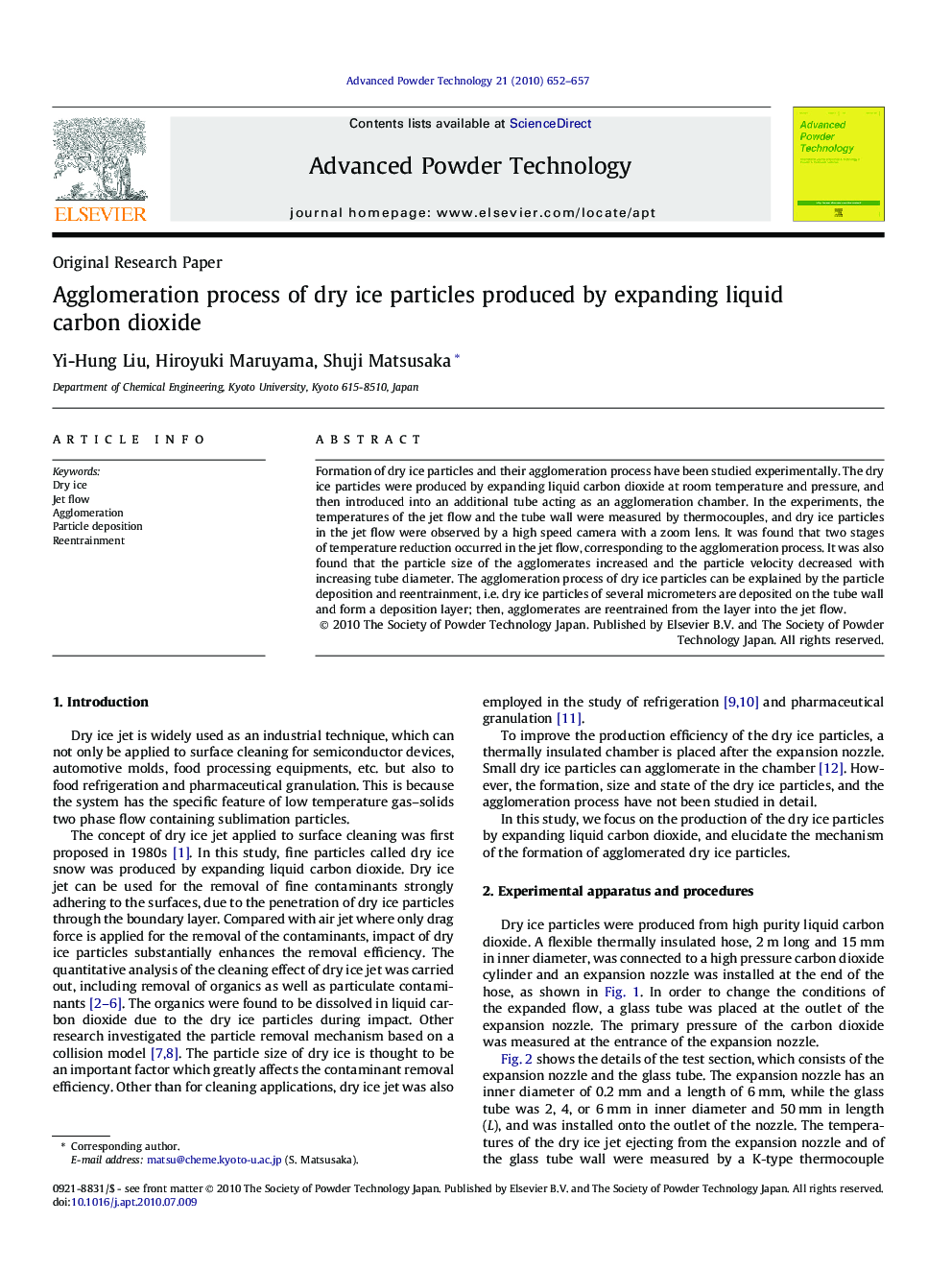| Article ID | Journal | Published Year | Pages | File Type |
|---|---|---|---|---|
| 144756 | Advanced Powder Technology | 2010 | 6 Pages |
Formation of dry ice particles and their agglomeration process have been studied experimentally. The dry ice particles were produced by expanding liquid carbon dioxide at room temperature and pressure, and then introduced into an additional tube acting as an agglomeration chamber. In the experiments, the temperatures of the jet flow and the tube wall were measured by thermocouples, and dry ice particles in the jet flow were observed by a high speed camera with a zoom lens. It was found that two stages of temperature reduction occurred in the jet flow, corresponding to the agglomeration process. It was also found that the particle size of the agglomerates increased and the particle velocity decreased with increasing tube diameter. The agglomeration process of dry ice particles can be explained by the particle deposition and reentrainment, i.e. dry ice particles of several micrometers are deposited on the tube wall and form a deposition layer; then, agglomerates are reentrained from the layer into the jet flow.
